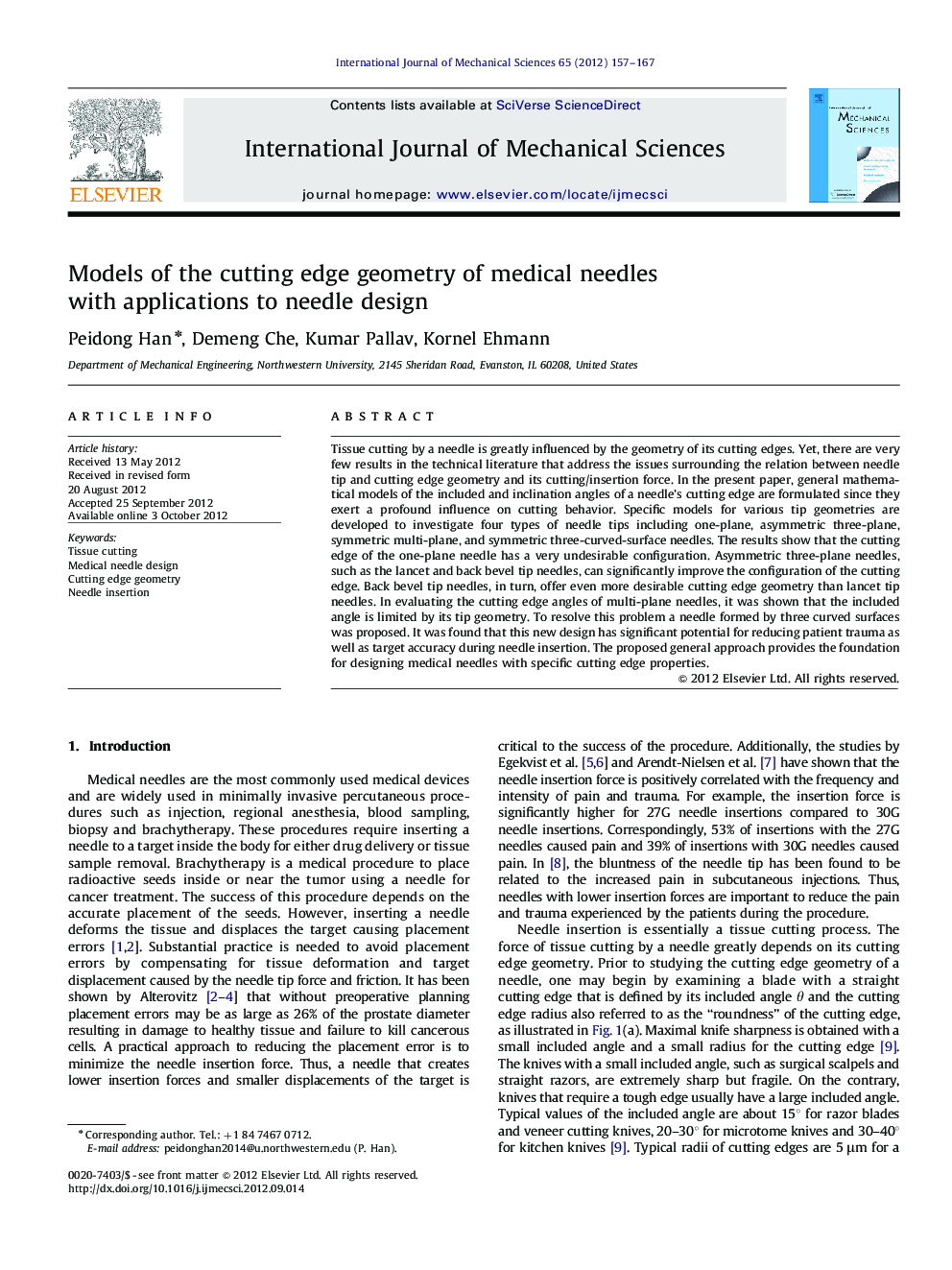| Article ID | Journal | Published Year | Pages | File Type |
|---|---|---|---|---|
| 785857 | International Journal of Mechanical Sciences | 2012 | 11 Pages |
Tissue cutting by a needle is greatly influenced by the geometry of its cutting edges. Yet, there are very few results in the technical literature that address the issues surrounding the relation between needle tip and cutting edge geometry and its cutting/insertion force. In the present paper, general mathematical models of the included and inclination angles of a needle's cutting edge are formulated since they exert a profound influence on cutting behavior. Specific models for various tip geometries are developed to investigate four types of needle tips including one-plane, asymmetric three-plane, symmetric multi-plane, and symmetric three-curved-surface needles. The results show that the cutting edge of the one-plane needle has a very undesirable configuration. Asymmetric three-plane needles, such as the lancet and back bevel tip needles, can significantly improve the configuration of the cutting edge. Back bevel tip needles, in turn, offer even more desirable cutting edge geometry than lancet tip needles. In evaluating the cutting edge angles of multi-plane needles, it was shown that the included angle is limited by its tip geometry. To resolve this problem a needle formed by three curved surfaces was proposed. It was found that this new design has significant potential for reducing patient trauma as well as target accuracy during needle insertion. The proposed general approach provides the foundation for designing medical needles with specific cutting edge properties.
► We developed mathematical models of the cutting edge geometry of medical needles. ► We examined the cutting edge geometry of existing needles using the models. ► Drawbacks and limitations of existing needles were identified using the models. ► A novel needle tip design was proposed to overcome the limitations of existing needles. ► The proposed general approach provides the foundation for designing medical needles with specific cutting edge properties.
